It had been raining all morning and was forecast to continue raining in the afternoon. Then after lunch the sun appeared and we quickly flung on a waterproof, willing to accept walking in the rain later for some some sunshine in the present.
Despite the earlier rain most of the water had soaked into the sandy soil but there is much more moss in the woods this year.
This moss had found a moist base on a fallen tree trunk.
I’m not sure how this acorn had become so embedded into the same fallen tree trunk. Hardly a propitious site but the acorn had heard the call of spring and was germinating all the same.
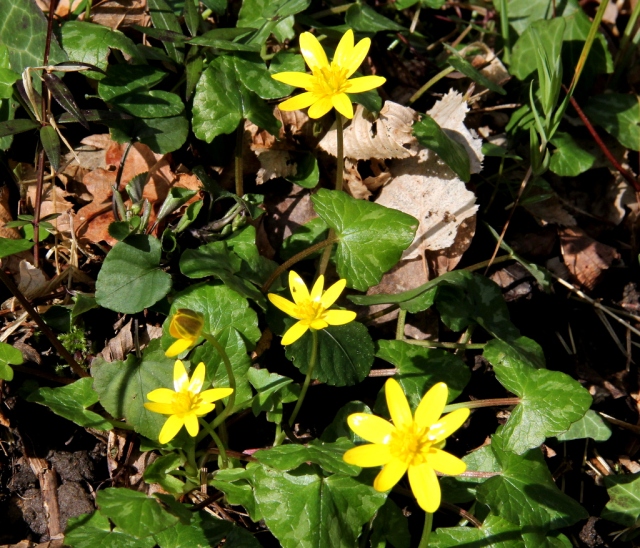
The Lesser Celandine has been out for some time now and the bright yellow flowers brighten up the woods.
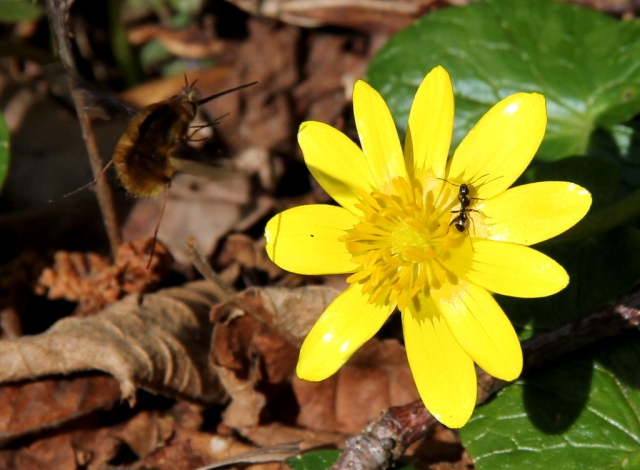
The Lesser celandine is a favourite with all sorts of insects, including bees, flies, hover flies and Bombylius major.

I only see these around in the springtime as they are parasitic on solitary bees, wasps and beetles. They lay their eggs near the nests of these species or on flowers that they visit. After hatching the larvae parasitise the host larvae which they consume. Not very nice.

I usually like fluffy things but the Bombylius major doesn’t quite do it for me.
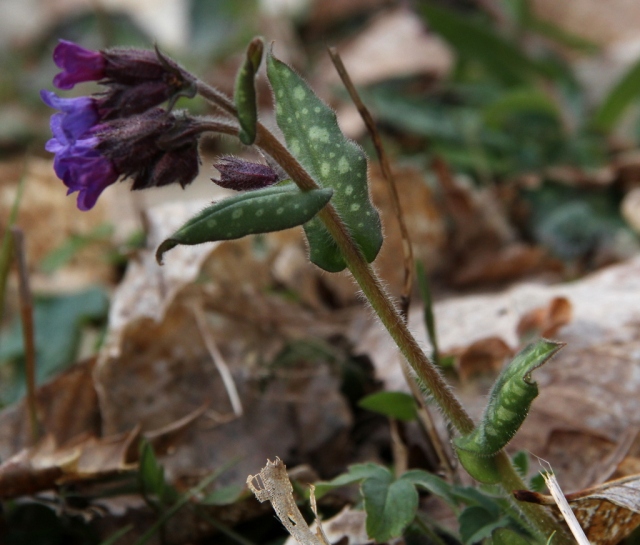
The Pulmonaria is opening now, it deserves its place minus the bee fly.
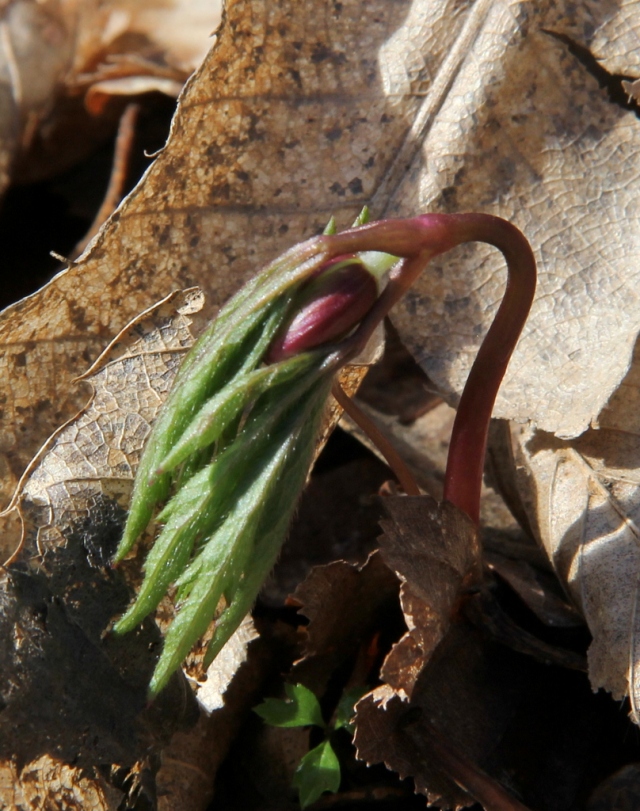
I saw my first wood anemones of the year but none in full flower.
They are usually white when fully open but the buds are usually pink in colour.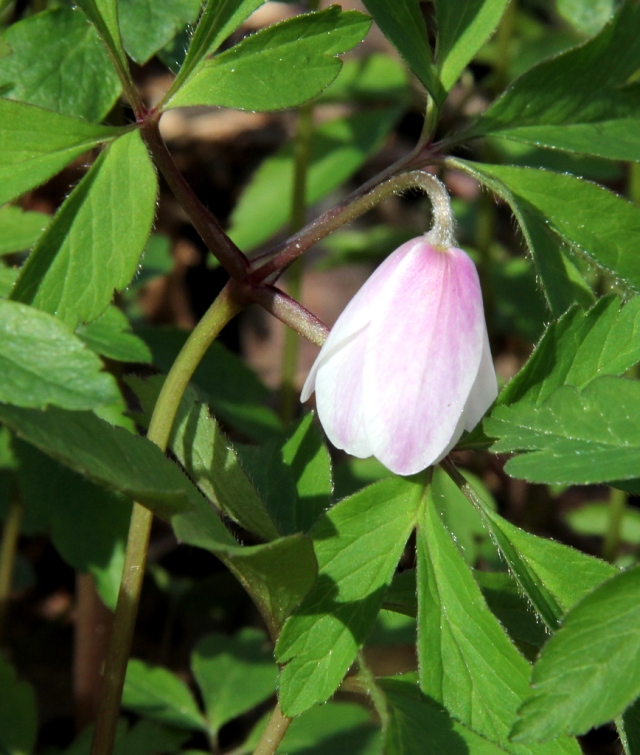
As the flower head matures the petals become paler in colour. They look so elegant just now as they are just breaking into flower.

Another first sighting on the walk was my first Ornithogalum umbellatum or Star of Bethlehem. It is such an elegant flower that I prefer the French name of La Dame d’onze heures which I find much more fitting. She is elegant but not shy and does not disdain to grow in the “lawn” in our back garden. This causes a very irregular mowing pattern in the spring as my husband refuses to go over them with the mower.
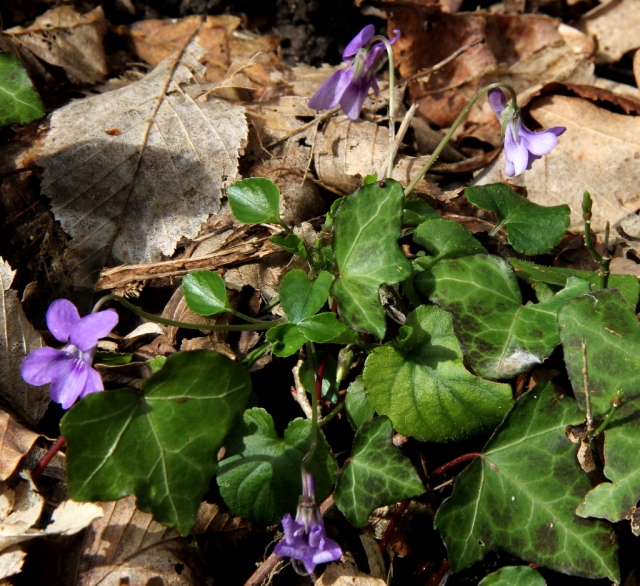
The dog violets were open in the woods and have been in the garden for a couple of weeks. Most of the violets are the unscented dog violets but I did find a clump of perfumed ones last year.
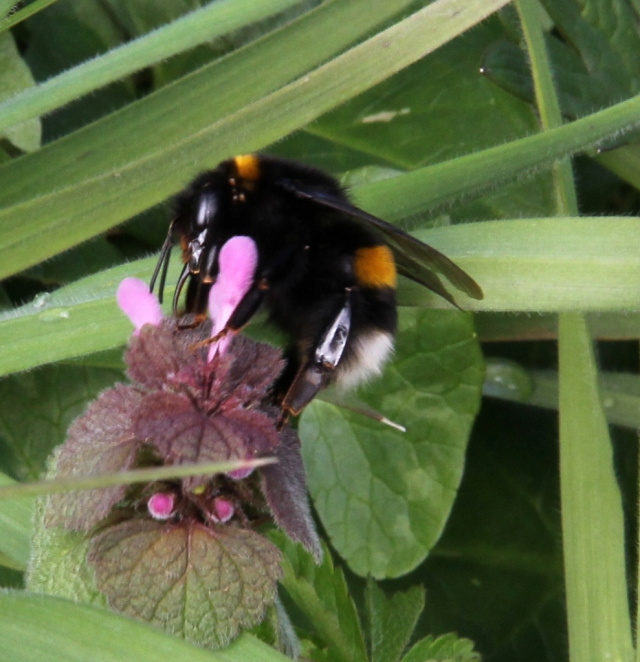
The queen white-tailed bumble bees (Bombus lucorum) is the most common bumble around us at the moment. I often see them on the look out for a likely nesting spot flying close to the ground, not interested in finding flowers. This one has no pollen so perhaps she too is on the look out for a good site.
So we managed our walk without getting wet. Just as well as the rain seems to have set in again.



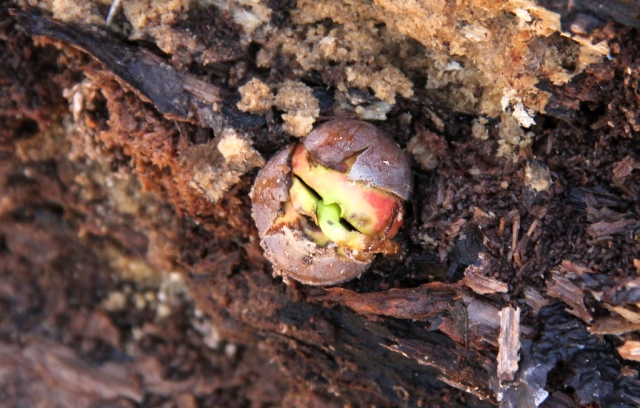
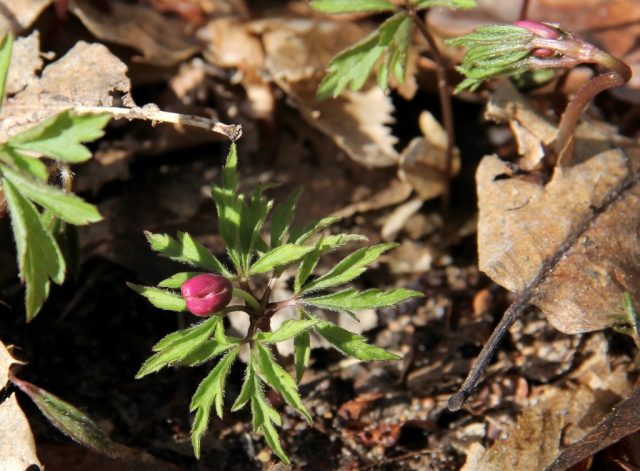
Thank you for sharing your walk, and for showing the Ranunculus ficaria. The leaves are the same as the plant I have but the petals of my flowers are much more pointed. I’m not keen on the furry bee-like fly either, here they fly most of the summer. Christina
LikeLike
I’m sure there must be quite a lot of variety amongst wild flowers in the same species which makes identification very difficult. I like the Lesser Cellandine for the brightness it provides at this time of year.
LikeLike
I am not a fan of the sound of the Bee Fly… it is like a high-pitched buzz saw… or a French teen’s low powered “motorbike” going past flat out… but at least with the latter… you get a doppler effect as it goes past!! And, of course, it GOES PAST! The bee flies don’t!!
I get told off by Pauline for mowing round the Lizard Orchids…. “You can’t leave them all!!” is the usual comment… but A] I like Lizard Orchids…. and B] it adds a some fun to what is really a boring task going up and down with the mower!!
Lovely pix as per the norm!
LikeLike
I’ve seen photographs of Lizard Orchids, they are really beautiful but I have never seen any near us.
LikeLike
I have a fondness for all the anemones, but I have never seen a wood anemone. Now that I’ve seen your photos, I really want one! A nearby nursery lists such a large selection I don’t know how I will choose. Do they like shade?
You are lucky to have a husband who mows around the flowers.
LikeLike
The wood anemones grow in the clearings in among the trees and only last for a short while until the trees get their leaves and it becomes quite shady. I don’t know how they would behave in a garden. I found a patch last year with different colours , I will go back this year to see if they are still the same.
LikeLike
Lucky, Lucky you…we won’t see anything like this for at least 6 more weeks!
Linda
http://coloradofarmlife.wordpress.com
http://deltacountyhistoricalsociety.wordpress.com
LikeLike
Those insect photos are amazing. You’re quite the photographer.
LikeLike
I’d like to improve my photography to help with identification of the things I see. I would especially like to learn more about the solitary bees that live around me.
LikeLike
How lovely – all those flowers! Beautiful photos of the anemones. I think they look prettier at that stage anyway. Does Pulmonaria grow wild near you, or is that in your garden?
LikeLike
The Pulmonaria grows wild, all the photos were taken on our walk near the house. It is just starting to come up now and it will go on into May at least.
LikeLike
We just got another 9 inches of snow here so it’s nice to see your flowers. We won’t see any for a while yet.
LikeLike
It is fun exchanging views at this time of year.
LikeLike
I agree!
LikeLike
What a wonderful walk! Such beauties along the way. Great photos of the bee fly!
LikeLike
Thank you, we are so lucky with what we can find around us.
LikeLike
Your photos are so amazing. I love the detail, love the color, and they are just fun and enjoying to look at. Thank you.
LikeLike
I’m glad you enjoyed the photographs, Charlie. I’m trying to improve at the moment and I love taking photographs of the wild flowers and the things I see in them.
LikeLike
That was interesting about the parasitic bee-fly. It has a remarkably long proboscis– must be adapted to feed from some long-necked flowers?
LikeLike
I hadn’t thought about that. I’ll keep a look out. It does tend to feed very rapidly, hummingbird style so it is adapted not to necessarily use a firm landing site and sit on the flowers although it can do that to.
LikeLike
I aways enjoy your walks. Wish I could be there with you!
LikeLike
I was thinking how pretty the bee fly looked until your description, Amelia. Now… Not so much! You are weeks ahead of us here in Surrey – we are currently in the grip of winter again.
LikeLike
I’ve seen pictures of the snow in Surrey!
On Sun, Mar 24, 2013 at 12:37 AM, a french garden
LikeLike
So beautiful! I’m still waiting for the spring to come 🙂
LikeLike
Spring seems to be late everywhere this year.
LikeLike